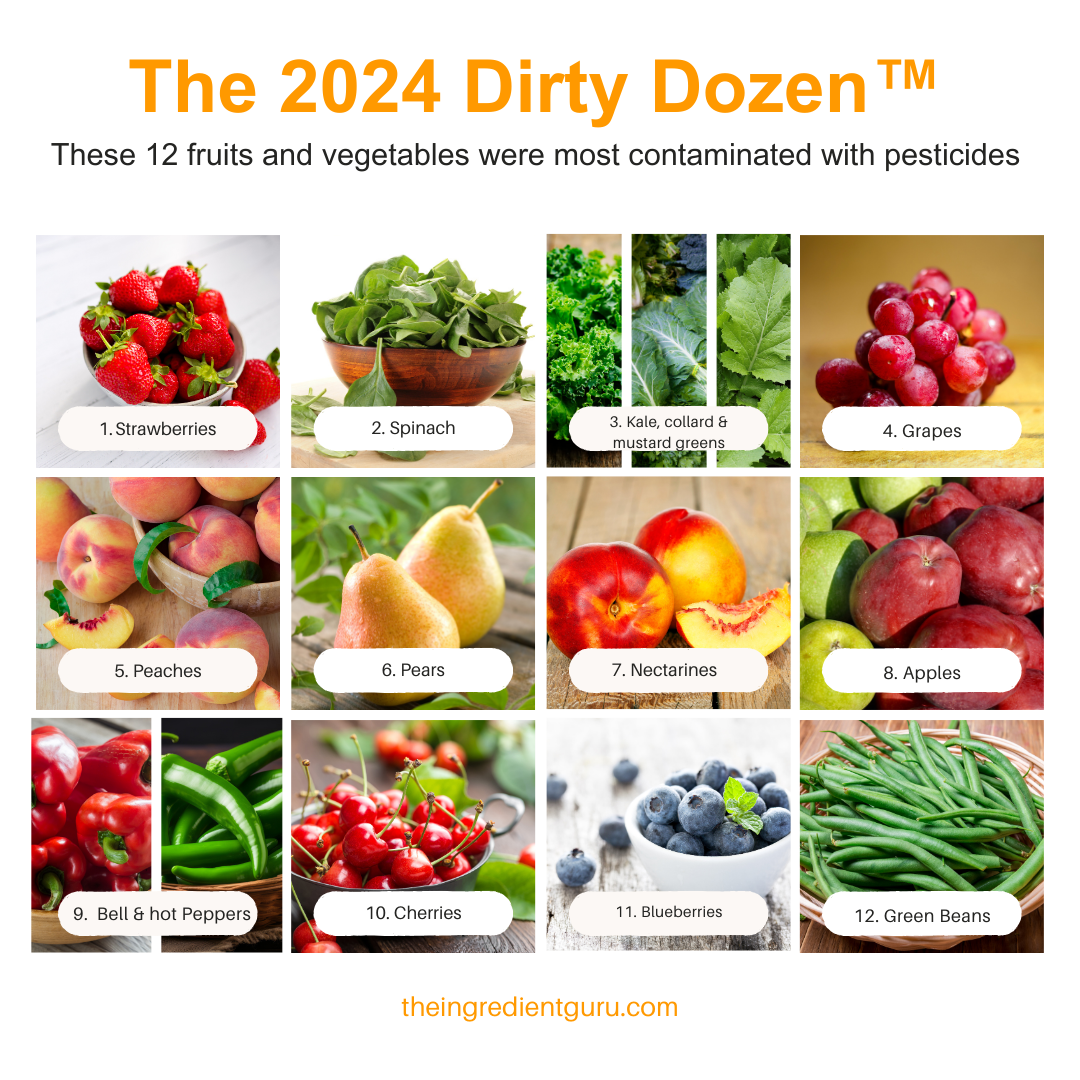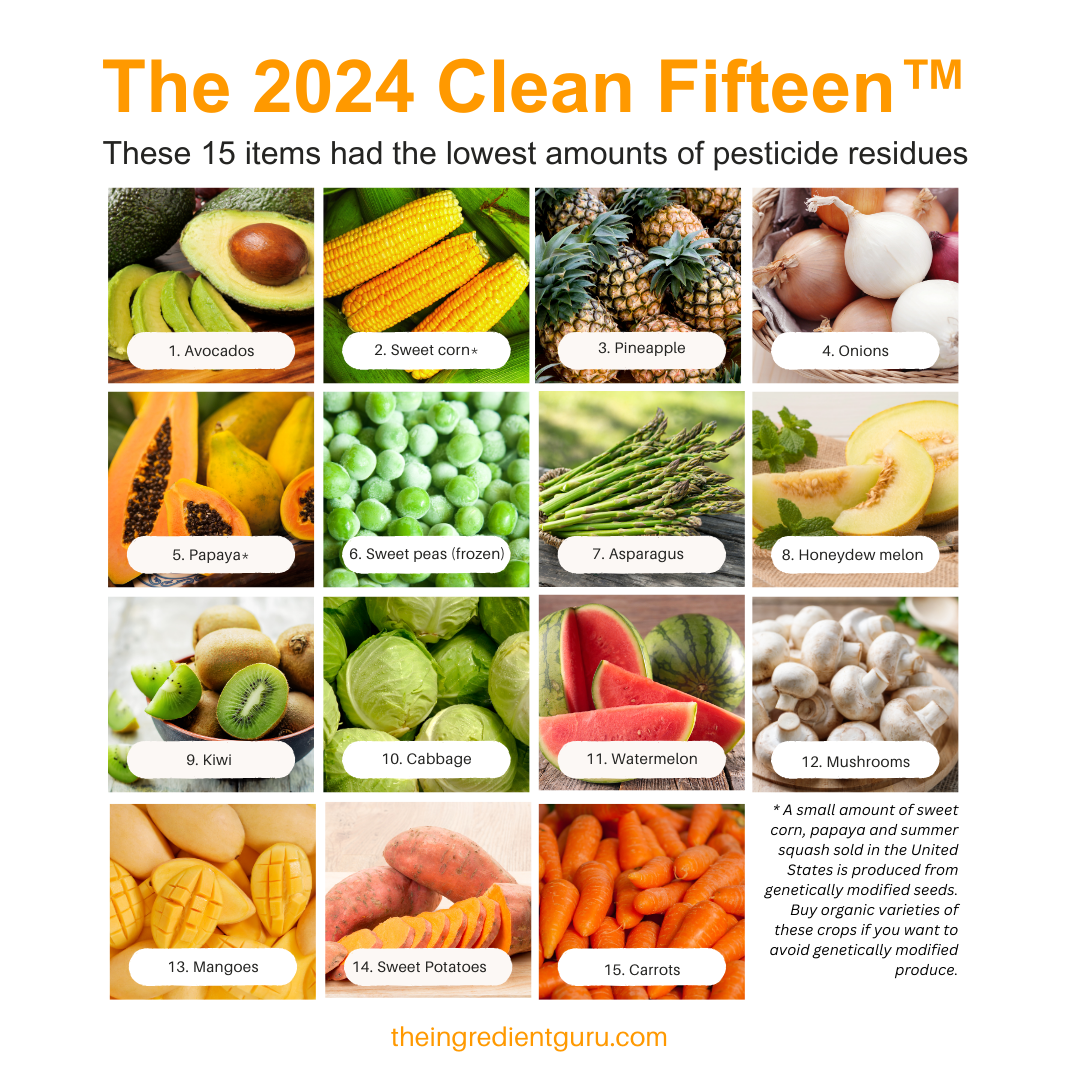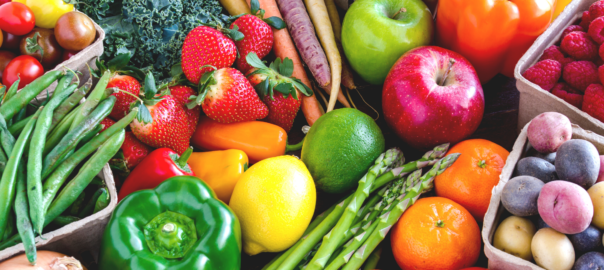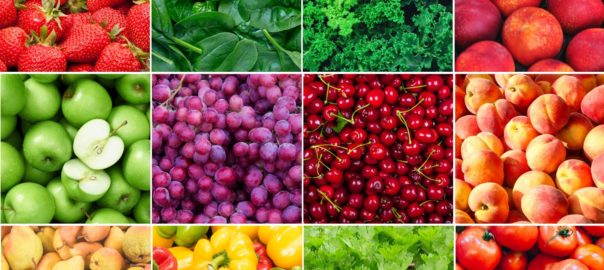Here’s this year’s Dirty Dozen list:
1. Strawberries
2. Spinach
3. Kale, collard and mustard greens
4. Grapes
5. Peaches
6. Pears
7. Nectarines
8. Apples
9. Bell and hot peppers
10. Cherries
11. Blueberries
12. Green beans
In a surprising twist, green beans have made it onto the list. Unfortunately, strawberries remain in the number one spot. That means anything strawberry....
EWG’s Clean Fifteen
1. Avocados
2. Sweet corn (fresh and frozen)
3. Pineapple
4. Onions
5. Papaya
6. Sweet peas (frozen)
7. Asparagus
8. Honeydew melon
9. Kiwi
10. Cabbage
11. Watermelon
12. Mushrooms
13. Mango
14. Sweet potatoes
15. Carrots


Previous Years
For those who are interested here’s a list of what’s been on the Dirty Dozen over the years. It’s astonishing to me, and more than a little heartbreaking, that we continue to have certain foods that are so excessively treated with pesticides. Many of these are foods that fed to children for whom the pesticide body burden is even worse due to their smaller size and higher consumption. Regardless of your size, we need to avoid pesticides in our diet. Print out and take your handout with you and stay on top of which products you MUST buy organic so you can eat well to be well.
2023: strawberries, spinach, kale, collard and mustard greens, peaches, pears, nectarines, apples, grapes, bell and hot peppers, cherries, blueberries, green beans
2022: strawberries, spinach, kale, collard, and mustard greens, nectarines, apples, grapes, bell and hot peppers, cherries, peaches, pears, celery, tomatoes



